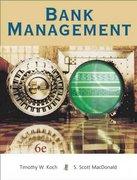Question
1.The total amount of U.S. currency in circulation divided by the U.S. population comes out to about $3,500 per person. That is more than most
1.The total amount of U.S. currency in circulation divided by the U.S. population comes out to about $3,500 per person. That is more than most of us carry. Where is all the cash?
2.The Bring it Home Feature discusses the use of cowrie shells as money. Although we no longer use cowrie shells as money, do you think other forms of commodity monies are possible? What role might technology play in our definition of money? Should banks have to hold 100% of their deposits? Why or why not? Explain what will happen to the money multiplier process if there is an increase in the reserve requirement?
3.What do you think the Federal Reserve Bank did to the reserve requirement during the 2008-2009 Great Recession?
4.A bank has deposits of $400. It holds reserves of $50. It has purchased government bonds worth $70. It has made loans of $500. Set up a T-account balance sheet for the bank, with assets and liabilities, and calculate the bank's net worth.
5.How do banks create money?
6. How does microeconomics principles impact business decisions?
7. What happens to the supply curve if the price of a relevant resource falls?
8. Suppose new knitting machines are invented. Using supply and demand diagrams, show the effect of this event on the market for sweatshirts
9. Explain what will happen to the money multiplier process if there is an increase in the reserve requirement?
10. The Bring it Home Feature discusses the use of cowrie shells as money. Although we no longer use cowrie shells as money, do you think other forms of commodity monies are possible? What role might technology play in our definition of money?
Step by Step Solution
There are 3 Steps involved in it
Step: 1

Get Instant Access to Expert-Tailored Solutions
See step-by-step solutions with expert insights and AI powered tools for academic success
Step: 2

Step: 3

Ace Your Homework with AI
Get the answers you need in no time with our AI-driven, step-by-step assistance
Get Started


